Thirty-five years after leaving Earth, Voyagers 1 and 2 have reached the very edge of the solar system.
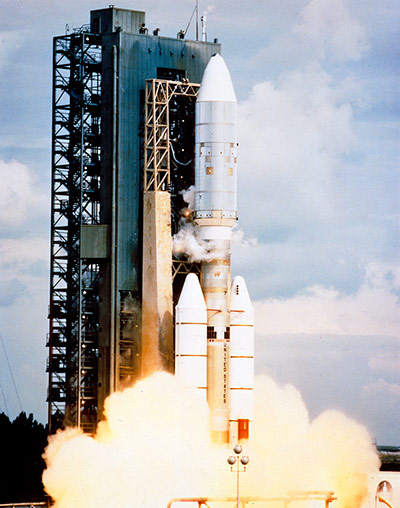
Launched from the Kennedy Space Centre, Cape Canaveral, Florida, by a Titan rocket, Voyager 1 was the second of two spacecraft launched in 1977 to explore the planets in the outer solar system. It overtook Voyager 2 on the way to Jupiter. Voyager 1 made its closest approach to Jupiter in March 1979 before flying on to Saturn
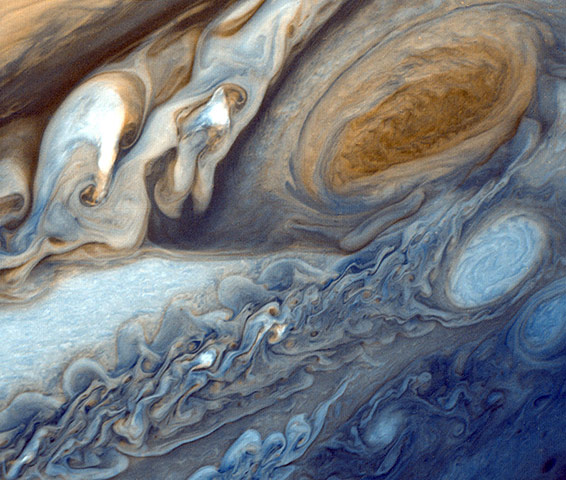
Crystal-clear images of Jupiterís atmosphere. Details of the famous great red spot storm and evidence of many other storm systems in the atmosphere. Voyager also discovered Jupiterís thin ring bands
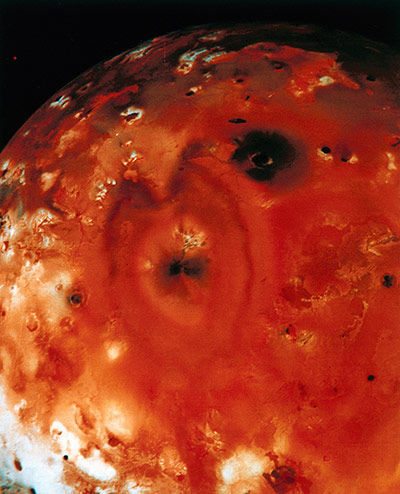
Ejection plumes on the surface of Io, one of Jupiterís moons, were seen for the first time by navigation engineer Linda Hyder. They revealed Io to be the most geologically active body in the solar system, with hundreds of volcanic eruptions
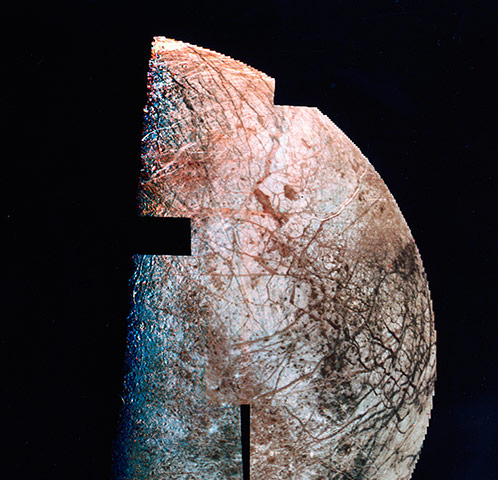
The suggestion of an ocean beneath the strange icy crust of another of Jupiterís moons, Europa. This has since become a prime candidate, among astrobiologists, for possibly harbouring extraterrestrial life
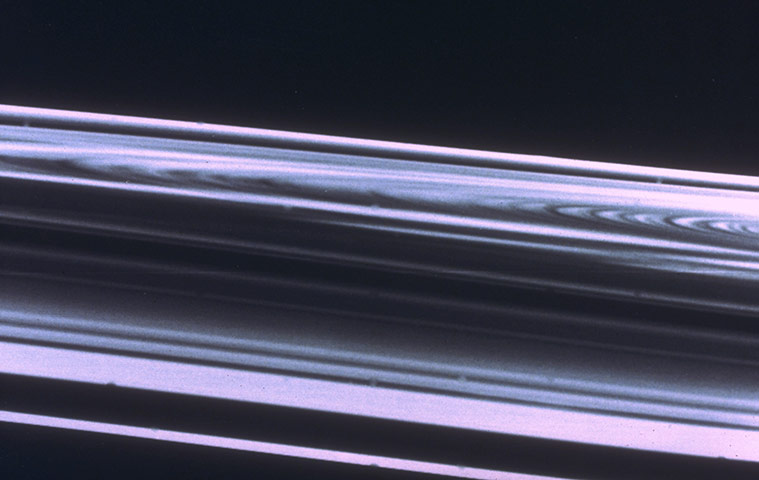
The structure of Saturnís rings was revealed in exquisite detail for the first time. Strange radial spokes made of dust trapped in Saturnís magnetic field were discovered by young imager Carolyn Porco
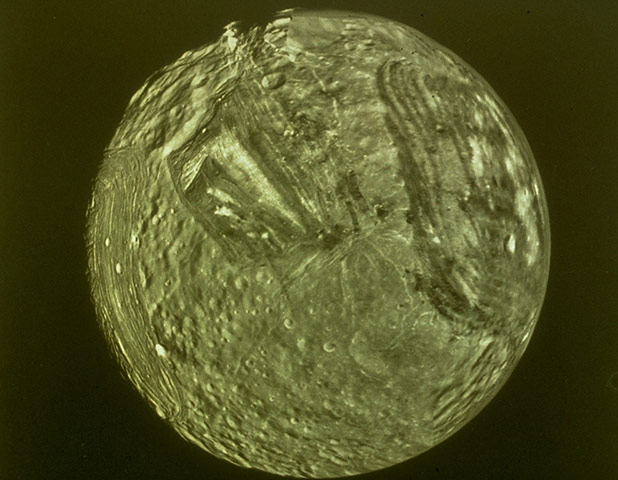
Uranusís moon, Miranda, apparently assembled from the smashed-up fragments of earlier worlds of rock and ice, perhaps destroyed in a giant impact even Ė which might also account for the 90-degree tilt to Uranusís own axis
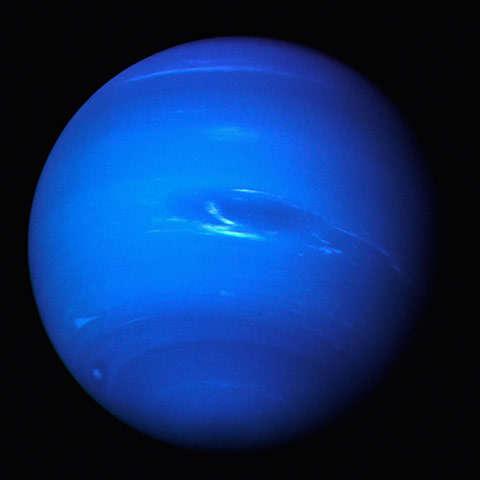
In 1989, Voyager 2 made our first close encounter with the stunning blue planet Neptune. Its surprisingly turbulent, storm-laden atmosphere, this far from the sun, was clearly being driven by heat from deep within the planet
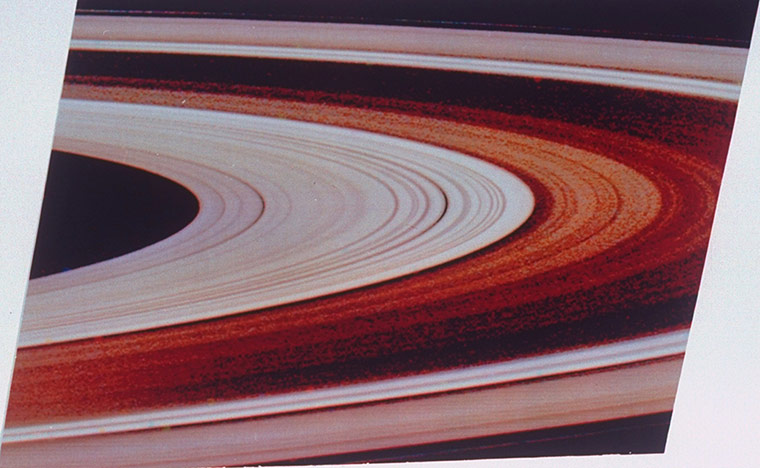
An image of Saturn's rings taken by Voyager 1

Jupiter's rings are invisible from Earth and do not show any structure similar to the rings of Saturn or Uranus. They are made up of dust and rock fragments. They were discovered by Voyager 1 and further investigated by Voyager 2 in 1979. As they contain no ice the rings reflect little light, making them difficult to see
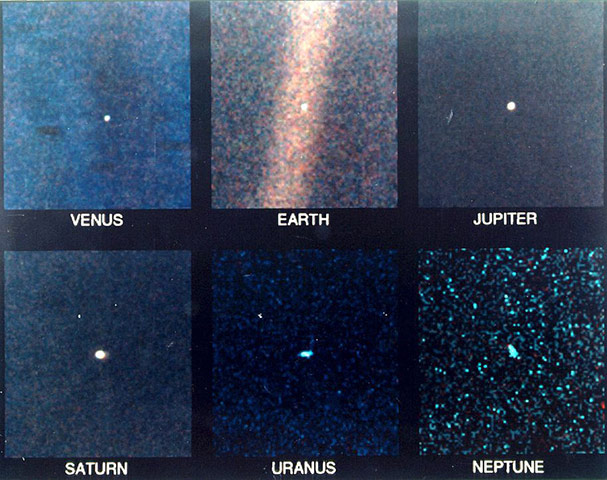
This is a composite photograph of six of the solar systemís planets taken from a vantage point 6bn km above the plane of the solar system. This final photograph uniquely revealed our home planet as a very humbling Ďpale blue dotí, as Carl Sagan described it
Why Curiosity Matters

Launched from the Kennedy Space Centre, Cape Canaveral, Florida, by a Titan rocket, Voyager 1 was the second of two spacecraft launched in 1977 to explore the planets in the outer solar system. It overtook Voyager 2 on the way to Jupiter. Voyager 1 made its closest approach to Jupiter in March 1979 before flying on to Saturn

Crystal-clear images of Jupiterís atmosphere. Details of the famous great red spot storm and evidence of many other storm systems in the atmosphere. Voyager also discovered Jupiterís thin ring bands

Ejection plumes on the surface of Io, one of Jupiterís moons, were seen for the first time by navigation engineer Linda Hyder. They revealed Io to be the most geologically active body in the solar system, with hundreds of volcanic eruptions

The suggestion of an ocean beneath the strange icy crust of another of Jupiterís moons, Europa. This has since become a prime candidate, among astrobiologists, for possibly harbouring extraterrestrial life

The structure of Saturnís rings was revealed in exquisite detail for the first time. Strange radial spokes made of dust trapped in Saturnís magnetic field were discovered by young imager Carolyn Porco

Uranusís moon, Miranda, apparently assembled from the smashed-up fragments of earlier worlds of rock and ice, perhaps destroyed in a giant impact even Ė which might also account for the 90-degree tilt to Uranusís own axis

In 1989, Voyager 2 made our first close encounter with the stunning blue planet Neptune. Its surprisingly turbulent, storm-laden atmosphere, this far from the sun, was clearly being driven by heat from deep within the planet

An image of Saturn's rings taken by Voyager 1

Jupiter's rings are invisible from Earth and do not show any structure similar to the rings of Saturn or Uranus. They are made up of dust and rock fragments. They were discovered by Voyager 1 and further investigated by Voyager 2 in 1979. As they contain no ice the rings reflect little light, making them difficult to see

This is a composite photograph of six of the solar systemís planets taken from a vantage point 6bn km above the plane of the solar system. This final photograph uniquely revealed our home planet as a very humbling Ďpale blue dotí, as Carl Sagan described it
Why Curiosity Matters
Sept. 21, 2012: Adam Steltzner doesnít sound much like an ordinary engineer. For instance, when we asked him if he would talk about Curiosityóand explain why the Mars rover matters to ordinary people--the former rock-n-roller responded "I'm totally down with that."
Steltzner begins, "I'm so thankful to Clara Ma for suggesting the name 'Curiosity.' It embodies a fundamental attribute that defines us as humans. "
ďWhy do we explore? Itís our nature,Ē he says. ďHuman curiosity is why you and I can talk across the country by phone. It's why I'm sitting 60 feet above the ground in a building made of alloys and other high-tech composite materials. We dominate this planet because we wonder what's around the next corner."
When people ask Steltzner "Is the new rover worth 2 Ĺ billion dollars?" he has a compelling answer:
"It's not 2 Ĺ billion dollars we stuffed in a trunk and blew into space. Itís thousands of high tech jobs spread over 37 states. It's honing and developing our skills in science, engineering, and math."
He notes that the U.S. has slipped to 14th in science education and 18th in math1 Ė in a world where we're competing for economic prosperity with nations 1 through 13.
"This mission is an investment in high tech jobs, in inspiring the youth of our country, in stepping up rung by rung toward 1st place. It's the best stimulus you could imagine!"
Okay, curiosity matters--but does it matter more than rock-n-roll? Steltzner played guitar in a rock band for years, so he has the chops to answer this question, too.
"In some sense, exploration and music are both art forms," he says. "They're both expressions of our humanity. But exploration can surprise us more - or at least differently - than music can. Music can surprise us only about what we find in ourselves. Exploration surprises us with what we learn of ourselves and of the universe."
Steltzner says music led him to exploration. During high school he played in a rock band. One night driving home from a gig he noticed that the constellation Orion was in a different place than it had been before.
But why? "I hadn't paid attention during high school classes at all. So I didn't know."
His curiosity made him decide to take an astronomy class. First, though, astronomy had prerequisites such as elementary algebra and conceptual physics. He took them all. "I basically redid my high school education at the community college."
The rest--which includes a bachelorís degree from UC Davis, a masterís degree from Caltech, a job at JPL, and a daredevil landing on Mars--is history.
After the glory of the Curiosity landing fades, what will this explorer do next?
"Our solar system offers us grand challenges," says Steltzner. "I'd like to see a Mars sample return. I'd like to land on the surface of Europa Ė the most likely place in the solar system for life. And third, I'd like to float a boat on the methane lakes of Titan."
"The solar system is calling out to us," he says. "The wind's at our back. It's time to explore!"
http://science.nasa.gov/science-news...iositymatters/


Comment